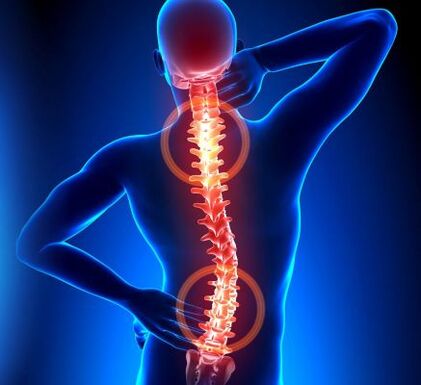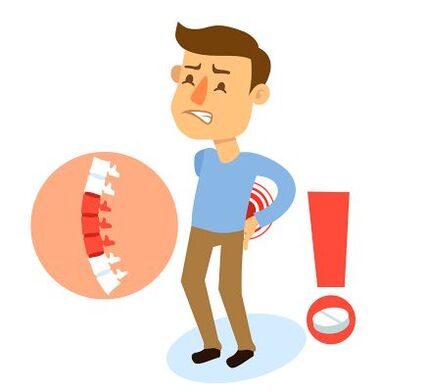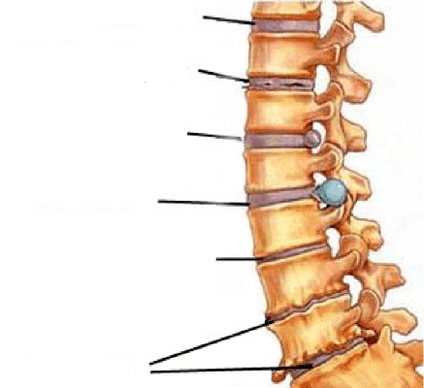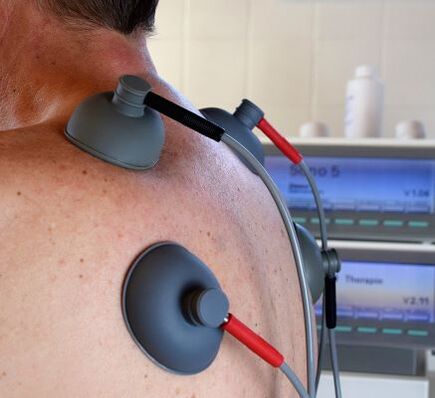Imagine osteochondrosis being diagnosed in 50-80% of the world's population in the 21st century. The numbers are not small and most importantly, the disease is "rejuvenating". If earlier the first symptoms appeared not earlier than the age of 35, now the first signs are already diagnosed in adults. Most often, a predisposition to osteochondrosis is observed in people with uneven load on the spine. This can be the wrong posture, the habit of carrying the bag on one shoulder, sitting in one position for long periods of time, injury, excessive sports load and, of course, age-related changes.
"People have really heard about osteochondrosis, but not everyone knows what it is"
What is osteochondrosis?

Osteochondrosis is a pathology of the spine, manifested by degenerative damage to the intervertebral discs and adjacent bone tissue, leading to the removal of the surfaces of the vertebral bodies and joints.
Unfortunately, when the first back pains appear, almost no one goes to the doctor, this leads to the fact that the disease has already been detected in serious stages. In the early stages the disease is treated quite effectively since the changes in the spine are not critical, but over time this process is irreversible.
The main sign that you may already have osteochondrosis is pain in the neck, spine or lumbar region. In a more advanced form, the pain "radiates" to the chest, arms, shoulders, legs, and other parts of the body.
Depending on the location, osteochondrosis is divided into several types:
- Cervical osteochondrosis.
- Chest osteochondrosis.
- Lumbar osteochondrosis.
Symptoms and signs of osteochondrosis
Clinical manifestations arise as a result of damage to nerve tissues and blood vessels near the injured area.
- Back pain.
- Feeling "lumbago" after physical activity.
- Poor posture and, as a result, scoliosis.
- Disorders of body sensitivity in certain areas of the body.
- Nonsense.
- Dizziness and nausea due to blood supply.
- headache.
Osteochondrosis can have a variety of symptoms and signs, which is why it is not always easy to detect it at the first signals. Get checked periodically and do not delay going to the doctor at the first suspicion of osteochondrosis.
Causes of osteochondrosis

There can be many reasons for the development of osteochondrosis. Typically, proper respect for the spine does not cause this disease, unless at a young age, at the age of 50 indeed.
Think about how you sit every day, how you sleep, whether you have a comfortable pillow and always carry weight in one hand, whether you have the right load during sports, as all of this can lead to irreversible consequences for the spine. . .
The reasons for the development of osteochondrosis can be:
- ᲒNetic predisposition.
- Nervous exhaustion of the body.
- Poor posture during active growth.
- Wearing uncomfortable shoes.
- Wears heels at an early age.
- Physical overload of the body.
- Excess weight.
- Sedentary and sedentary lifestyle.
- Improper weight bearing.
- Frequent lifting of loads.
- Vibration is loaded on the body.
- Dehydration of the body.
- Hypothermia of the body.
"Keep in mind that being overweight and motionless over time will cause back problems! "
Under the risk:
- Drivers.
- ისისOffice staff.
- Moving.
- Pregnant woman.
- Fat.
- Professional athletes.
Take care of your health and live a healthy lifestyle.
Stages of development of osteochondrosis

None of the diseases start suddenly and immediately. Osteochondrosis is no exception. There are 4 main stages in the development of osteochondrosis.
- Primary dystrophic changes of the intervertebral cartilage. Disc dehydration, microcracks, loss of elasticity - all this is already happening in your spine, and you can practically not feel any change, but they are still there and you can notice them. If you notice spinal discomfort during prolonged sitting or minor pain after physical exertion, do not waste time, make an appointment with your doctor.
- Compression of the intervertebral space and stretching of the nerve endings and the appearance of pain in certain areas of the spine. The pain syndrome appears each time with sharp turns and tilting. This stage is hard to miss and, of course, can not be ignored.
- Abrasion of intervertebral cartilage tissue. Symptoms of pain are pronounced and can lead to numbness of the extremities. It is impossible to relieve pain without medication. At this stage, serious treatment is required by following the regimen and taking medication.
- The last and most serious stage. Osteochondrosis on it is already irreversible because the intervertebral cartilage is completely destroyed. Usually, surgery is needed in such cases.
Advanced cases of osteochondrosis can lead to partial or complete paralysis. In order for the situation not to reach a critical state, it is necessary to start treatment in time in the early stages of osteochondrosis development.
Treatment of osteochondrosis
The treatment of osteochondrosis of the spine requires an individual approach to each patient. There is no standard and uniform treatment method. The patient's age, physical condition, causes of osteochondrosis and many other factors are taken into account. But, of course, each treatment has common features:
Medications for osteochondrosis

Osteochondrosis cannot be cured by medication alone, but they play an important role in reducing the severity of disease symptoms, blood supply, and tissue regeneration processes. Complete eradication of the disease requires an integrated approach and keeping the body in proper condition throughout your life. Osteochondrosis medications include several groups of medications.
- First of all, it is needed to relieve pain that interferes with lifestyle. Nonsteroidal anti-inflammatory drugs are used for these purposes - nonsteroidal anti-inflammatory drugs. (Ketoprofen, Ibuprofen, Ketorolac).
- After relieving the pain symptoms, chondroprotectors and vitamins are prescribed to restore the cartilage tissue. Such drugs prevent further destruction of the intervertebral discs and reduce inflammation. Such drugs contain glucosamine, which, unlike analogues, does not require injection. Simply open the powder pack in a glass of water and take it orally. This method of taking promotes better absorption of the drug and relieves discomfort during injections.
- Medications that stimulate blood microcirculation.
- Local analgesics.
Physiotherapy during osteochondrosis

Treatment of osteochondrosis with physiotherapy is quite an effective measure and most importantly, it is painless and has practically no contraindications. Such procedures help to remove inflammation, eliminate spasms and eliminate the cortex of nerve endings. Physiotherapy includes procedures such as:
- Electrophoresis.
- Magnetotherapy.
- Phototherapy.
- Shock wave therapy.
- Mud therapy.
Be aware that some physiotherapy procedures may not be used during exacerbations. Treatment of osteochondrosis with physiotherapy is prescribed only by a doctor and in combination with medical treatment.
Physiotherapy and massage during osteochondrosis
Physiotherapy exercises for osteochondrosis promote the formation of a muscular corset that helps support the diseased spine. A set of exercises will be selected individually for each patient. For the 3rd stage, the exercises are held only at bedtime, smoothly and preferably under supervision.
Massage treatment of osteochondrosis is also a common practice. The main thing is to have a massage done by a professional who does not harm your spine. At the end of the session you should feel the muscles relax, release the clamps and general release. Manual massage improves blood circulation. In the acute period of the disease it is better to abandon this method of treatment.
Treatment of cervical osteochondrosis

During osteochondrosis of the cervical spine, the patient feels headaches in the head, neck, arms and shoulder girdle. May be in front of the blinking eyes of "flies", tinnitus and spots. Usually at an early stage the patient goes for his examination and has no doubt that the case is quite different. It is prescribed for cervical osteochondrosis.
- Agnioprotectants against dizziness, which most often occurs in the morning (pentoxifylline).
- Chondroprotectors, which prevent further destruction of cartilage tissue, reduce inflammation, relieve pain and restore joint mobility (glucosamine, chondroitin sulfate).
- Antidepressants that are sometimes used by patients because of the constant pain has a detrimental effect on the psyche and contributes to the development of insomnia, depression (doxylamine).
- Vitamins that improve the general condition of the body.
- Anti-headache colloids that prevent patients from living a full life.
- Nonsteroidal anti-inflammatory drugs are prescribed to relieve pain during the acute period.
Treatment of thoracic osteochondrosis
Osteochondrosis of the thoracic spine is characterized by severe pain in the anterior part of the chest and breathing may become frequent and heavy. There may be severe pain when bending and bending around the shoulder blades. It is difficult to diagnose chest osteochondrosis because the pain is not felt directly in the spine and the symptoms are more like diseases of the heart, lungs or kidneys. Fortunately, this type of osteochondrosis is very rare and the cause of its occurrence in most cases is scoliosis.
Treatment of lumbar osteochondrosis
Lumbar osteochondrosis is currently the most common type. This is due to the fact that this particular part of the spine has the greatest stress. First, there is dull pain in the lumbar region, then the pain begins to radiate to the leg and can lead to numbness of the lower extremities. Problems with flexion and expansion arise. In such cases, the main thing is to start timely treatment of lumbar osteochondrosis and use complex measures. A few rules must be followed:
- Limit physical activity.
- Take all prescribed medications.
- Undergo prescribed physiotherapy.
- Take a special massage course.
- Get rid of excess weight if necessary.
In case of improper treatment and non-compliance with the recommendations, surgery can be performed during the last osteochondrosis of the lumbar spine.
Which doctor treats osteochondrosis?
If you experience back pain or suspect osteochondrosis, you should first appoint a therapist who will refer you to a neurologist, vertebrologist, orthopedist, and surgeon for a review based on your complaints.
How Long Is Osteochondrosis Treated?
Many patients wonder how long will osteochondrosis treatment last? No one will give you an exact answer, but the main signs of the disease disappear, usually within 1-3 months, further maintenance of the condition is required.
Is It Possible To Get Rid Of Osteochondrosis Forever?
It all depends on what stage it is at. If the patient finds himself in stages 1-2, then with proper treatment and following all the rules, you can get rid of osteochondrosis forever. In the later stages, unfortunately, it will be impossible to get rid of the disease completely.
Orthopedic pillow
You may need an orthopedic pillow if you have been diagnosed with cervical osteochondrosis. This pillow will improve the quality of your sleep and will not continue to deform the spine. You can contact a specialty store where consultants will show you all the pillow options and advise you on pricing.































